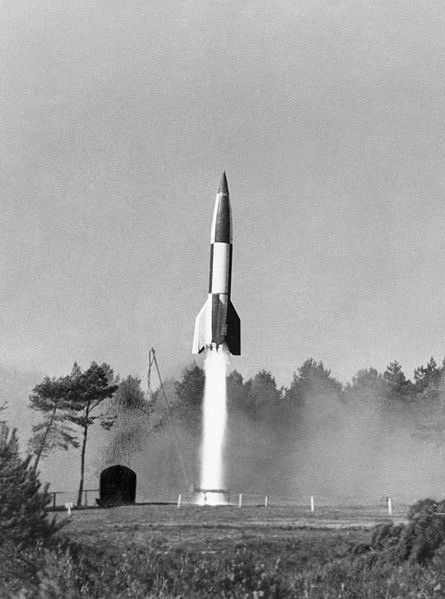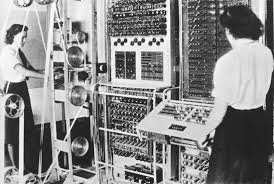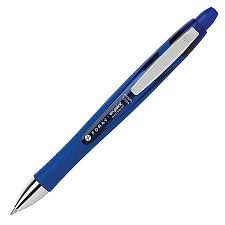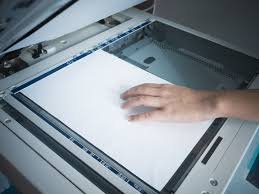NINE VALUABLE INVENTIONS OF THE SECOND WORLD WAR
While the Second World War is widely remembered as the bloodiest and the most devastating conflict in the history of mankind that led to the slaughter of millions of lives and leaving a very large portion of human society (Europe especially) in ruins. Scientific breakthroughs as a result of the war effort from both the Axis and Allied Powers also churned out significant inventions that are beneficial to the Post-war human civilisations. This article highlights many of the every-day inventions and products we owe to the World War Two.
1. The Helicopter:

Helicopter is a versatile aircraft that can take off and land vertically and can also hover motionless in the air. The machine produces thrust by means of the blades of a main rotor as they rotate above the fuselage, or body, of the aircraft. Though the development of the helicopter have evolved for many years before the Second World War, essential breakthrough in the perfection and design of the helicopter were accomplished during the Second World War. German engineers made rapid pace in the development of helicopter in the 1930s and 1940s.
The FA-61, which was designed by Heinrich Focke was the first practical design for a manoeuvrable helicopter. Another German helicopter, the FL-282 Kolibri, was extensively used by the German navy during World War II (1939-1945). It could fly at 140 km/h (90 mph) and reach an altitude of 4,000 m (13,000 ft.) with a payload of 360 kg (800 lb.). It was the first helicopter design produced in quantity, but only a few became operational before the war ended. After the end of the War, helicopter design and manufacturing became proliferated all over the industrialised world, largely owing to the helicopter’s impressive reputation as a versatile and powerful air machine.
2. V-2 Rocket

V-2 Rocket was the first ever rocket-powered guided missile to be invented and to be used extensively in warfare. The astonishing weapon which was first launched in 1942 was developed during the World-War Two by German scientists and engineers (led by Werner Von Braun) for the sole objective of bombing Allied Nations cities in Europe. The V in the V-2 rocket stands for Vergeltungswaffe in German meaning (reprisal weapon) and the effectiveness and versatility of the V-2 rocket extended beyond Second World War as it was extensively used by the eventual superpowers (United States and Soviet Union) as jet engine prototype for large space and missile rockets. Operation Paper Clip was a military operation launched by the U. S. Army to capture German V-2 rocket engineers and transfer them to the United States including the famous rocket and space engineer Werner Von Braun. Similar operation like Operation PaperClip was launched by the Soviets also to recruits German rocket scientist and engineers to its own space and rocket programs. Experiments of the V-2 rocket performed in the United States between 1946 and 1951 essentially marked the beginning of the American Space Program.
Eventually the V-2 rocket ultimately emerged as an indispensable and integral part of the American Space Program. Furthermore, the expertise and ingenuity of Werner Von Braun and his other V-2 rocket engineers was vitally instrumental in the first successful moon landing mission (Apollo 11) and other subsequent space missions of the United States of America. It can be rightly asserted that the successful development and the deployment of the V-2 rocket as a World War II weapon significantly fuelled the ambition of space exploration by both the United States and The Former Soviet Union.
3. Nuclear Energy:
Though the Manhattan Project launched by the United States during the Second World War was actually aimed for the development of an atomic bomb, however, the Manhattan Project ushered in a new era in human history known as the Atomic Age. It demonstrated the feasibility of atomic energy for both peaceful and military uses. The development of the nuclear weapon has a colossal and widespread implication both culturally and politically. The success of Project Manhattan effectively gave birth to the Atomic Age. It also instigated the arms race between the two major superpowers (United States and the Soviet Union). Both military and peaceful applications of nuclear energy are enormous beneficial to modern civilisation. Though the deadly realities of a possible nuclear war or nuclear fallout can never be eliminated, nuclear weapons invented as a result of the efforts of the Manhattan Project during the Second World War are used by many countries as a deterrent to nuclear attack. Nuclear medicine also appears to be a promising area where the applications of nuclear energy can be extensively used and developed for medical purposes such as the treatment of cancer.
4. Computers:

Many notable advances to modern computing were achieved during the Second World War. The Government Code and Cipher School at Bletchley Park was established to innovate solutions that would speed up the breaking down of the Enigma codes. These innovations greatly advance the capabilities of modern computing modern computing would not be what it is without the innovation of the Government Code and Cipher School at Bletchley Park and Colossus. Originally invented as a way to speed up the cracking of the Enigma codes, Colossus was the first of many computers which have gradually shrunk in size to become part of everyday life, with their use in work, schools and play around the world.
5. Medical Penicillin
While penicillin was discovered by Alexander Fleming, medical penicillin (a powerful and more advanced type of penicillin) came into the world stage during the period of the Second World War. Howard Florey, an Australian-American scientist was credited with the development of the medical penicillin in 1941 after successfully spearheading the studies with a group of scientists beginning in 1938. The drug developed was powerful and sophisticated enough that it proved a great success when used in the Second World War to treat wounded Allied soldiers. He went on to win the Nobel Prize for medicine alongside Sir Alexander Fleming.
6. Radar Technology
Breakthrough in radar technology was achieved during the Second World War. Advanced radar technology was perfected and widely deployed by the British especially during the Battle of Britain (the air war between the RAF and the German Luftwaffe), to detect and report incoming raids by the German Luftwaffe. After the war, many significant contributions to radar technology were recorded by many countries and the technology have found many important applications outside its original military use today. Radar has been a valuable tool for the police in catching speeding motorists. Scientists and meteorologists use radar to observe and forecast the weather. Other scientists use radar for remote sensing applications, including mapping the surface of the earth from orbit, studying asteroids, and investigating the surfaces of other planets and their moons.
7. Ball-Point Pen

During the 19th century, many efforts were made to manufacture a pen with a rolling ball tip, but not until 1938 did the Hungarian brothers Georg and Ladislao Biro invent a practical ballpoint pen. Its breakthrough was based upon a viscous, oil-based ink. Early ballpoint pens did not write well; they tended to skip, and the slow-drying oil-based ink smudged easily. But the ballpoint pen had several advantages over the fountain pen: The ink was waterproof and almost inerasable; the pen could write on many kinds of surfaces and could be held in almost any position for writing. The British RAF was one of the first to popularise and adopt the Ballpoint pen into widespread use during by ordering up to 30,000 units for pilots because of the pen inherent quality of ease of use at high altitude.
8. Photocopying/Xerography

The process of photocopying was invented by the American physicist Chester Carlson in 1937 prior to the beginning of the Second World War thereby widely adopted by the Allied Forces, however it was first commercially developed in the 1950s. Xerography makes use of the principle of photoconductivity, which is that certain substances resist passage of an electric current except when struck by light. Silicon, germanium, and selenium are poor conductors of electricity, but when light energy is absorbed by some of their electrons, the electrons are able to pass from one atom to another, thus allowing a current to flow when a voltage is applied. When the light is removed, their conductivity again becomes low. Xerography uses a photoconductive insulating layer, such as selenium, on an aluminium or any other conductive metal support.
9. Jet Engines
Important technical development changed the face of aviation after during and after the Second World War. The turbojet engine was developed almost simultaneously by the German engineer Hans von Ohain and the English engineer Frank Whittle (see Jet Propulsion). On August 27, 1939, the German Heinkel He 178 was invented and became the first jet-powered aircraft. The German Messerschmitt Me 262, the first operational jet, entered service in the fall of 1944. First seen as a way for airplanes to fly faster, jet engines could produce more power than piston engines and opened the way to vast improvements in airplane performance.
10. The Super Glue
The Superglue was a product that was accidentally produced during the Second World War when scientists were seeking for a materials that can be used to manufacture plastic gunsights for the war leading to the discovery of cyanoacrylates. However the evolution of the super glue reached its important stage in 1951 when researchers Harry Hoover and his teams including Fred Joyner while working for Eastman Kodak discovered the huge market potential of this substance and began the selling of this product in 1958.
Happy Reading.
Dont forget to Resteem, and upvote.
Have a Nice Day.